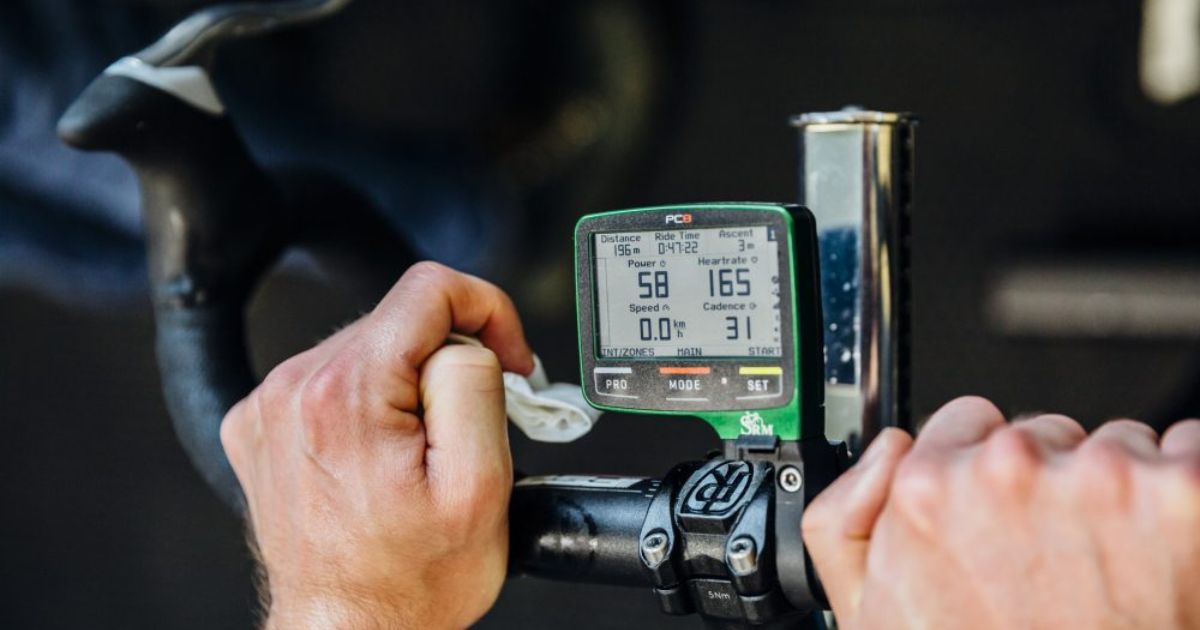Cycling with a power meter involves using a specialized device to measure the power output (in watts) generated by a cyclist during a ride. This objective metric provides valuable insights for optimizing training, setting goals, and making informed decisions about pacing during races or recreational rides.
Unleash the power within every pedal stroke, turning your ride into a precision driven journey. Picture a cycling experience where each movement is a measure of strength, a roadmap to efficiency. Step into a world where data meets performance, redefining goals and conquering limits.
Cycling with a power meter involves using a device to measure the watts of power generated while biking. This real-time data helps cyclists optimize training, set goals, and make informed decisions about pacing. It’s a popular tool for both professional and amateur cyclists to enhance overall performance.
Precision Performance Measurement

Precision Performance Measurement in cycling involves harnessing the power meter to quantify each pedal stroke, transforming your ride into a data-driven journey. By precisely measuring watts generated, cyclists gain insights into their strength, enabling optimal training and performance enhancement.
Harnessing The Power Meter
Precision Performance Measurement begins with the integration of a power meter onto your bicycle. This device, whether attached to the crankset, pedals, or rear hub, captures and quantifies the force applied during each pedal stroke.
Quantifying Watts
The core of Precision Performance Measurement lies in the accurate measurement of watts generated. Watts represent the actual power output, providing cyclists with real-time data to understand the intensity of their efforts and make informed decisions about pacing and training.
Insights Into Strength And Efficiency
By precisely quantifying power output, cyclists gain valuable insights into their physical capabilities. This data-driven approach allows for a deeper understanding of strengths and weaknesses, enabling cyclists to tailor their training regimens for optimal performance and efficiency.
Data-Driven Journey
Precision Performance Measurement transforms a cycling journey into a data-driven experience, where cyclists can track, analyze, and leverage the measured metrics to set and achieve performance goals, ultimately maximizing their overall cycling experience.
Maximizing Efficiency With A Power Meter
Maximizing Efficiency with a Power Meter empowers cyclists to optimize their training by utilizing precise metrics. This approach allows riders to fine-tune their efforts, minimize energy wastage, and achieve peak performance through data-driven insights.
Performance Optimization Strategies
Maximizing Efficiency with a Power Meter involves implementing strategies based on the data provided. Cyclists can analyze power output to identify optimal cadences, gear ratios, and riding techniques, ensuring that each pedal stroke contributes to overall efficiency.
Pacing Precision For Endurance
The power meter becomes a valuable tool in pacing during long rides or endurance events. Cyclists can maintain a sustainable power output, preventing early fatigue and strategically conserving energy for crucial segments, ultimately enhancing overall efficiency over extended periods.
Targeted Training Interventions
Utilizing a power meter allows cyclists to target specific power zones during training sessions. This precision ensures that workouts are tailored to individual capabilities, promoting gradual improvement in power output, endurance, and overall cycling efficiency.
Data-Driven Recovery Strategies
By examining power metrics, cyclists can gauge the intensity of their rides and tailor recovery strategies accordingly. This includes optimizing rest intervals, nutrition, and recovery rides to maximize the overall efficiency of their training regimen and enhance long-term performance.
The Impact Of Cycling With Power

The Impact of Cycling with Power is transformative, revolutionizing training precision and performance outcomes. By providing actionable insights, power metrics empower cyclists to set and surpass goals, fostering a new era of informed and strategic riding.
Performance Precision
Cycling with power fundamentally transforms performance measurement, offering precise and objective metrics that go beyond traditional measures. Riders can gauge their efforts in real-time, leading to a profound impact on training specificity and overall performance outcomes.
Goal Setting and Achievement
The impact extends to goal setting, with cyclists leveraging power metrics to set challenging yet achievable targets. Whether aiming to increase average power, tackle specific training zones, or conquer climbs, the power meter becomes a key ally in surpassing personal milestones.
Tactical Race And Ride Planning
Cyclists armed with power data make informed decisions during races and rides. The ability to strategically manage efforts, pace climbs, and respond to dynamic situations enhances tactical planning, resulting in more successful and satisfying cycling experiences.
Continuous Improvement Culture
Cycling with power fosters a culture of continuous improvement. Regular analysis of power metrics encourages riders to adapt training strategies, refine techniques, and consistently push boundaries, creating a positive impact on long-term skill development and overall cycling proficiency.
Injury Prevention And Recovery
The impact of cycling with power extends to injury prevention and recovery. By monitoring power output, cyclists can identify signs of fatigue or overtraining, allowing for proactive adjustments to training intensity and facilitating a healthier, more sustainable approach to riding.
Community And Competitive Edge
The use of power meters in cycling not only transforms individual performance but also enhances the sense of community among cyclists. Sharing and comparing power data fosters healthy competition, camaraderie, and a collective pursuit of excellence, contributing to a dynamic and motivated cycling community.
Navigating Races And Rides With Power Metrics
Navigating Races and Rides with Power Metrics empowers cyclists with strategic insights, allowing for precise pacing, efficient energy distribution, and informed decision-making during competitive events. By leveraging power data, riders gain a competitive edge, enhancing their ability to tackle challenging terrain and make tactical decisions for optimal race or ride outcomes.
Tactical Pacing Strategies
Power metrics play a pivotal role in navigating races and rides by enabling cyclists to implement precise pacing strategies. By monitoring wattage output, riders can strategically distribute energy, avoiding early fatigue and optimizing performance throughout the entirety of the race or ride.
Dynamic Terrain Management
Cyclists equipped with power meters can adapt their efforts to the dynamic challenges of different terrains. Whether climbing steep inclines or descending with speed, power metrics provide real-time feedback, allowing riders to adjust intensity and maintain efficient energy utilization.
Informed Decision-Making
Power data serves as a guide for informed decision-making during races and rides. Cyclists can assess their capabilities, strategically respond to competitors, and make real-time adjustments to their riding style, enhancing their ability to overcome obstacles and capitalize on opportunities.
Goal-Oriented Performance
Navigating with power metrics aligns with goal-oriented performance. Riders can set specific power targets for critical sections of a race or ride, ensuring a focused and calculated effort that maximizes the likelihood of achieving personal bests or competitive success.
Race Simulation And Strategy Development

Cyclists can use power metrics during training to simulate race conditions and develop effective strategies. This preparation enhances race-day confidence, as riders enter events with a thorough understanding of their capabilities, enabling them to execute strategic plans for optimal race outcomes.
Frequently Asked Questions
What Is A Power Meter In Cycling?
A power meter is a device attached to a bicycle that measures the power output (in watts) generated by a cyclist during their ride.
How Does A Power Meter Work?
Power meters use various technologies, such as strain gauges or accelerometers, to measure the force applied to pedals or other relevant components.
Where Is The Power Meter Typically Installed On A Bike?
Power meters can be integrated into different components, including the crankset, pedals, or rear hub. The choice of location depends on the specific design and model of the power meter.
Final Thoughts
Embracing power metrics in cycling heralds a new era, where each pedal stroke becomes a calculated step toward peak performance. This data-driven approach not only refines training regimens but also fuels strategic race tactics, instilling a sense of precision and efficiency in every ride.
Beyond numbers, it cultivates a community united by a shared commitment to continuous improvement, setting the stage for a future where the science of cycling transforms not just individual journeys, but the collective landscape of the cycling experience.








